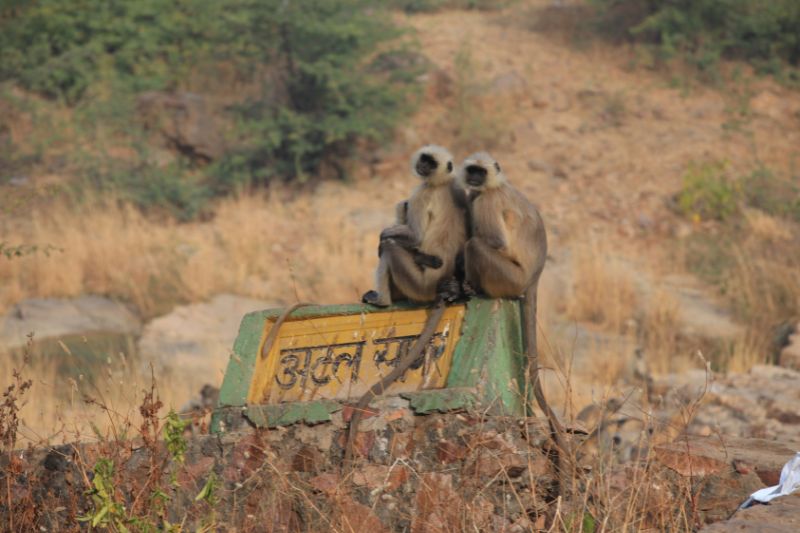When you imagine animals in India, you’ll likely remember the Bengal tiger and even the Asian elephant. But, beyond those two icons of the Indian plains, there is a much wider variety of animal species in India than you might think. And some of them could surprise you!
In this post, I’ll share a list of some of the animals you could see when on safari in India. So read on to check off the ones you’ve already seen, or get excited at the thought of spotting them on your future trip to India!
Bengal Tiger
With its orange and black stripes, the Bengal tiger is instantly recognisable. The very definition of majestic, tigers are one of the largest big cats in the world, with huge paws, large bodies and beautiful faces. They are beloved in the country, so much so, the Bengal tiger is the national animal of India.
Though tigers are found in multiple countries in Asia, you’ve got the best chance of spotting these animals in India. It’s estimated there are 4,000 tigers in the wild, and over 70% of them can be seen in India’s national parks, in particular Ranthambore, Jim Corbett and Pench. Remember, though, that they’re incredibly elusive animals and you’re often considered lucky to see a tiger in the wild. However, if you head out on a safari in Bandhavgarh, you’d be considered unlucky not to see one.
The dry season is the best season to spot Bengal tigers in the wild, due to the bush being less dense and the need for tigers and their prey to remain close to their sources of water.
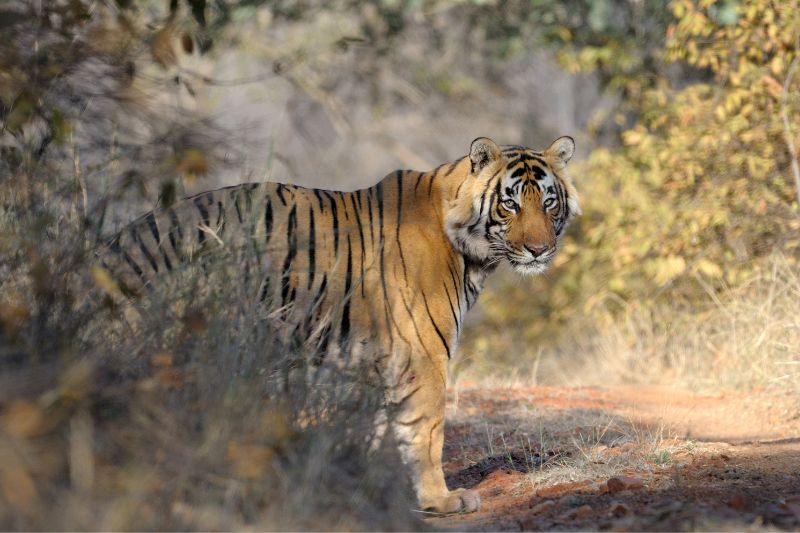
Indian Leopard
Indian leopards look similar to their African cousins, with beautiful yellowish-brown coats highlighted with telltale leopard rosettes. Like the ones in Africa, they’re solitary, nocturnal and relatively elusive. Keep your eyes peeled in the trees as this is where they spend most of their time. A reference from the Jungle Book, Bagheera means panther or leopard in Hindi.
It’s estimated there are 12-14,000 Indian leopards left in the wild, and sadly they’re considered vulnerable due to the illegal poaching trade. They can mostly be found in habitats similar to tigers, though leopards tend to avoid areas where tiger density is particularly high to reduce conflict and increase their chances of a successful hunt.
The largest number of Indian leopards can be found in the state of Madhya Pradesh, including the national parks of Kanha, Bandhavgarh, Pench, Panna, and Satpura. As with tigers, head to India in the dry season for the best chance of spotting leopards.
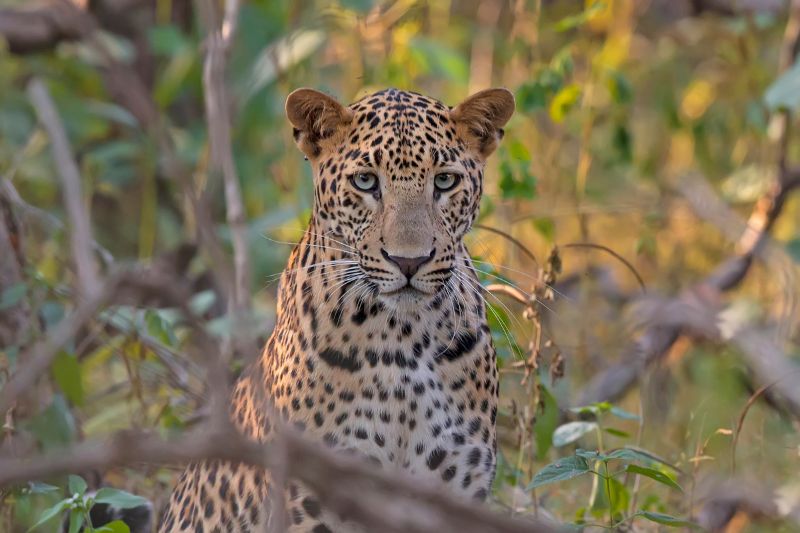
Clouded Leopard
These stunning wild cats are so-named because of the grey markings on their fur reminiscent of clouds. Clouded leopards are smaller than tigers and other leopard species, but quite a bit larger than most domestic cats too. Unlike big cats, they cannot roar, and unlike smaller cats, they cannot purr. Instead, their range of vocalisations includes growling, hissing and chuffing.
As they spend much of their time in trees, they’re considered to be elusive and tend to live alone. This can make them hard to spot, but you’ll still stand a chance in largely forested areas of parks including Pakke Tiger Reserve and Manas National Park.
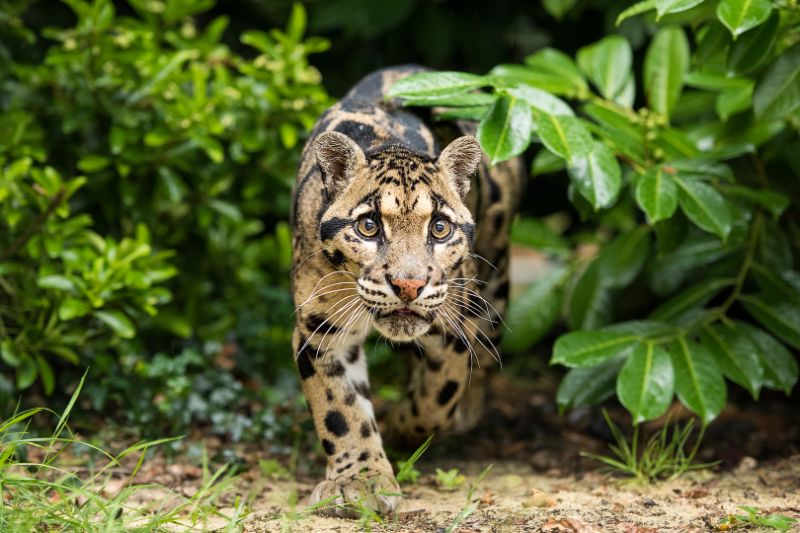
Snow Leopard
The fourth and final species of big cat found in India is the snow leopard. These monochromatic animals have a whitish-grey fur with large black rosettes.
Snow leopards are mostly found in the cold and mountainous regions of India, including the Himalayas, as well as in other Asian countries. Snow leopards are widely adapted for living in cold conditions, thanks to the thick fur found all over their bodies, small ears that reduce heat loss, large paws for traversing snow and a thick tail that is used for fat storage.
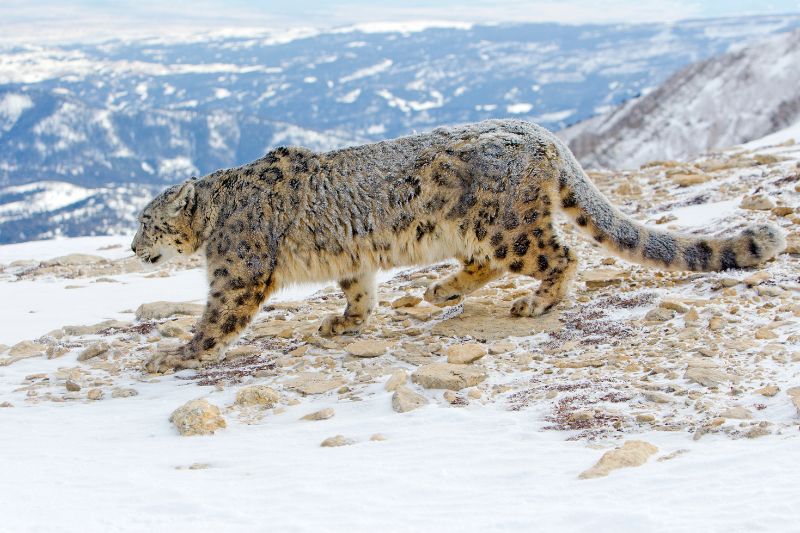
Asiatic Lion
You may have done a double take upon reading that you can find lions in India, but it’s true! Asiatic lions are a subspecies of those that continue to live in Africa, and they bear a very strong resemblance to each other with their long manes, golden coats and feline features.
There is only one place where these big cats still live, Gir National Park. This relatively small national park is primarily made up of dry, deciduous and savannah forests, making it an ideal habitat for the Asiatic lion.
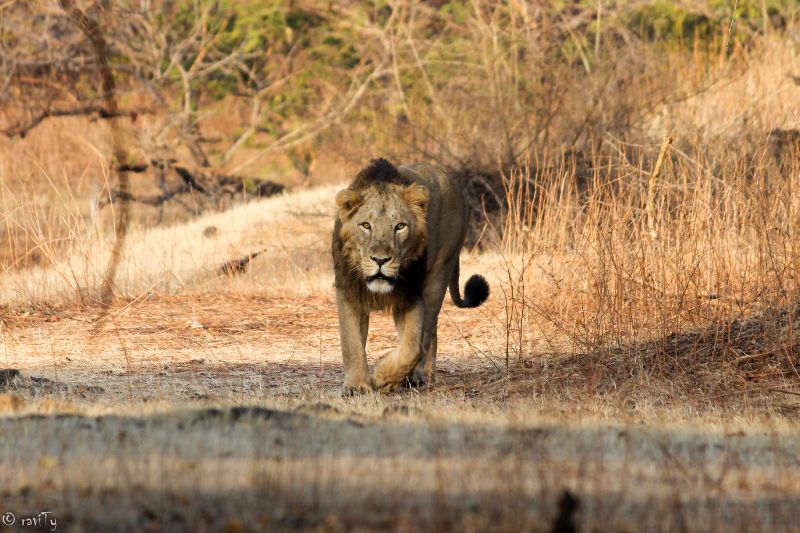
Sloth Bear
Native to the Indian subcontinent, sloth bears are characterised by their long, black fur, lean bodies and long lower lip, ideal for sucking up insects. This makes them stand apart from bears found in other parts of the world. Perhaps the most famous sloth bear is Baloo, one of the main characters in Rudyard Kipling’s The Jungle Book. The character’s name is a very clever play on the Hindi word for sloth bear, bahlu.
Sadly, the sloth bear is considered vulnerable due to habitat loss, but they can still be found in national parks across India including Ranthambore, Pench, Tadoba and Satpura.
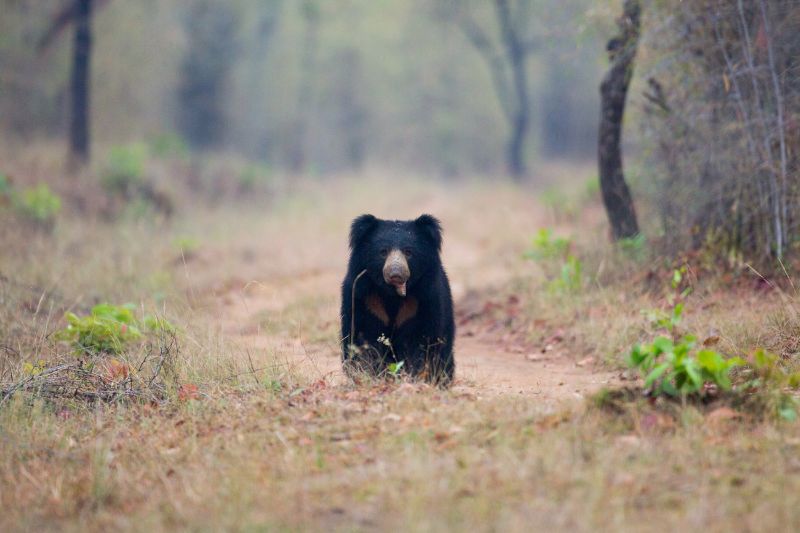
Striped Hyena
Another Indian animal that is also found in Africa is the striped hyena. This species of hyena is native to Northern and Eastern Africa, the Middle East, Central Asia and the Indian subcontinent, and is characterised by its stripes, tufted mane, large ears and long legs. The striped hyenas in the Indian subcontinent are larger than those found in Africa.
Striped hyenas are nocturnal, so it can be difficult to see them on an Indian safari unless you’re lucky to stay out after dark. They’re best seen in Sariska Tiger Reserve, Velavadar National Park, Panna National Park and Jhalana near Jaipur.
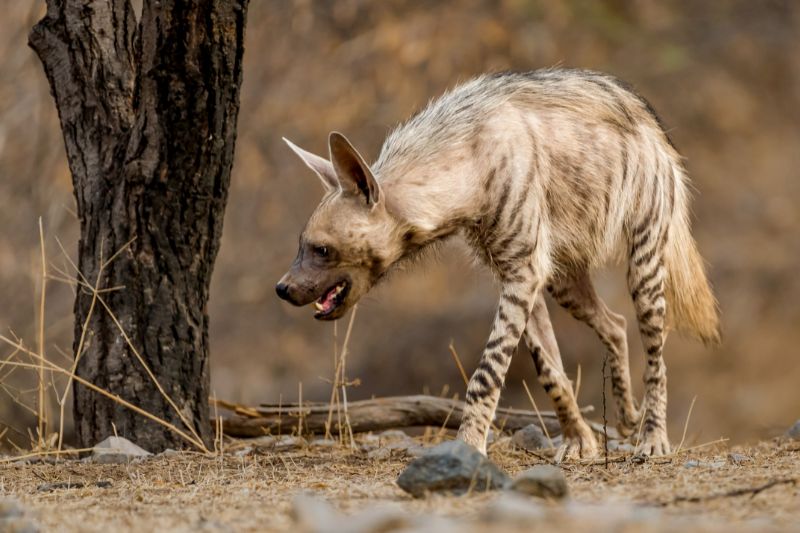
Dhole
The dhole is also known as the Asian or Indian wild dog, and that’s a great description of this Indian animal! It looks like a cross between a grey wolf and a red fox, thanks to its reddish-brown fur and wolf-like face. Dholes are highly social animals and live in clans, so if you see one, you’ll likely see more!
In India, dholes are largely found in forested areas of the Western Ghats, Central India and Northeast India. In particular, head to Kanha Tiger Reserve and Jim Corbett National Park for your best chance of seeing dhole in the wild.
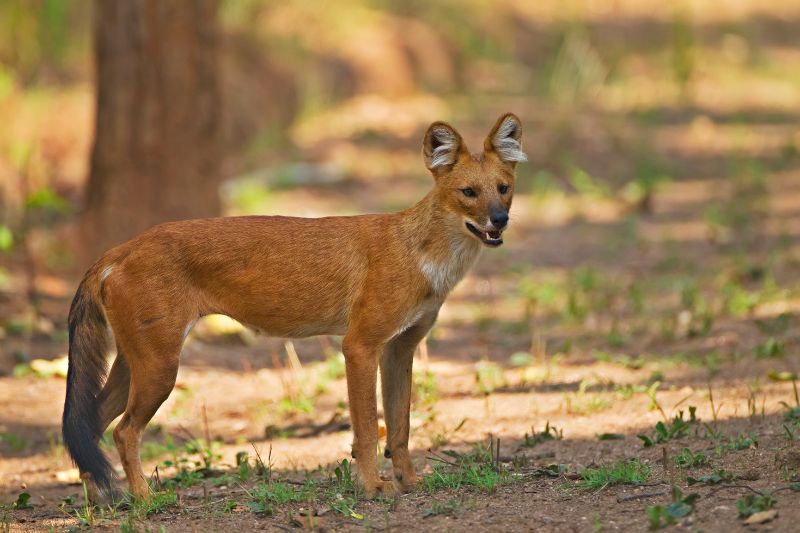
Indian Wolf
The Indian Wolf is a subspecies of grey wolf, native to southwest Asia and the Indian subcontinent. Owing to the warm conditions it experiences in its habitat, the Indian wolf has a lighter, shorter coat than the similar Eurasian and Himalayan wolves. They tend to live and hunt in packs and are characterised by their cunning personality.
There are roughly 3,000 grey wolves left in India, sadly making them one of the most endangered species of wolf in the world. Indian wolves are typically found in grassy habitats in Rajasthan, Maharashtra, Karnataka and, in particular, Velavadar National Park in Gujarat.
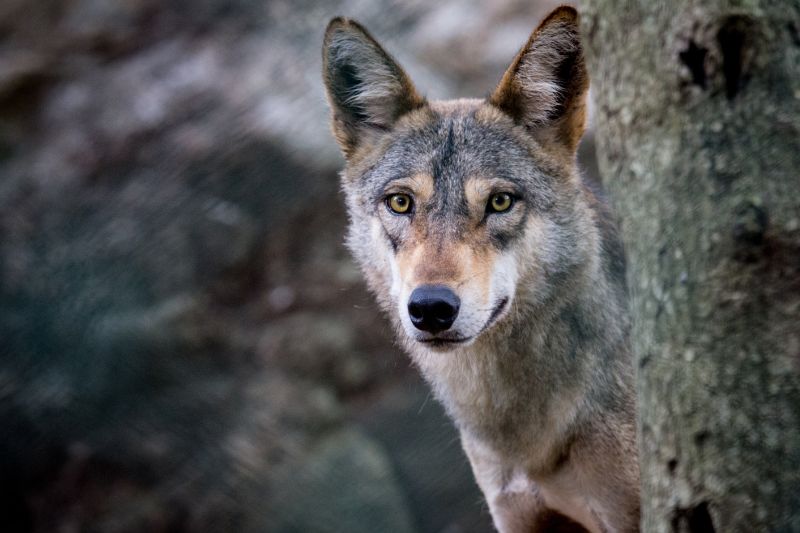
Indian Jackal
The Indian jackal is a sub-species of the golden jackal, native to the Indian subcontinent. Their fur is a mixture of black, white, grey and gold, and they grow to 1m in length and up to 11kg. They typically hunt in small packs but individual jackals can break off or be expelled from these groups. Interestingly, these lone jackals can attach themselves to individual tigers, in order to feed on their kills once the tiger is done. They can also alert their tiger to a kill, providing mutual benefit between them.
Indian jackals are often found in dry, deciduous forests and semi-arid regions, but they can also be seen close to human settlements. Your best chance of seeing them on safari in India is in Central India’s Kanha, Pench and Bandhavgarh National Parks.
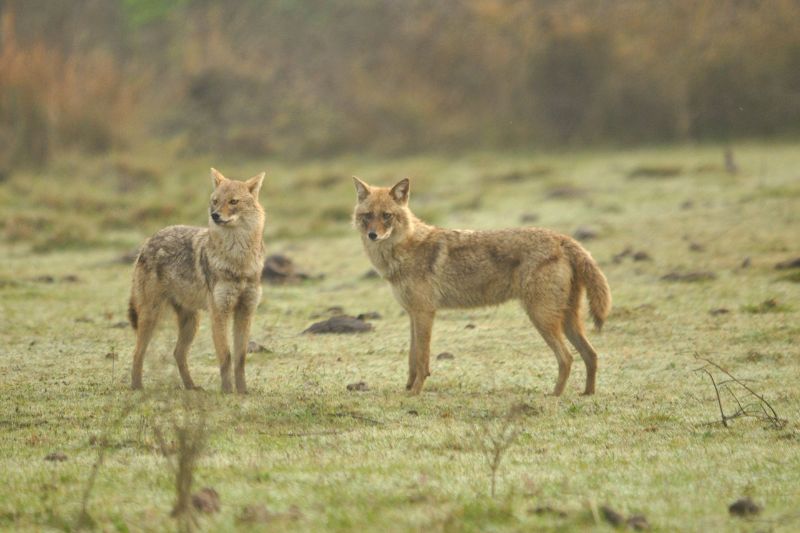
Sambar Deer
The sambar deer is a majestic creature, native to the Indian subcontinent. They have large antlers that can grow over 1m in length in fully grown adults and, like most other species of deer, only males have antlers. You’ll often find herds of females living together, while the males spend most of the year alone until it’s time to mate.
They tend to stay close to sources of water, so you’ll often find sambar deer in areas of forest, grassland and tropical rainforest. As they make up roughly 60% of the Bengal tiger’s diet, they can be seen in the same national parks, including Kanha, Corbett, Ranthambore, Bandhavgarh, Gir, Dudhwa, Manas, Kaziranga and Sariska.
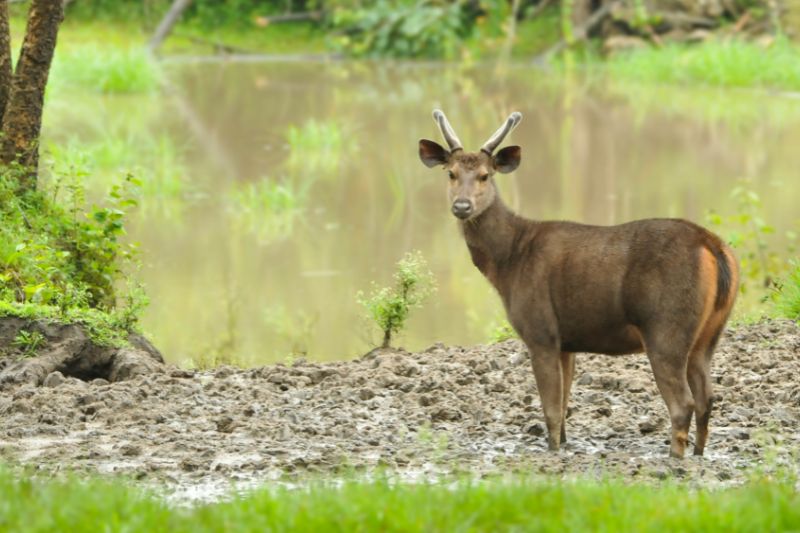
Chital Deer
The chital deer, also known by the very imaginative moniker, the spotted deer, is another species native to the Indian subcontinent. The name of the cheetah actually has a similar origin, meaning spotted! Chital deer are typically smaller than sambar deer, and males have antlers that can grow up to 1m in length too.
Chital deer live in large herds and can most often be found in open grasslands or forested areas, so they can be found in large numbers in India in national parks including Corbett, Kanha, Dudhwa, Bandhavgarh, Mudumalai and Sariska.
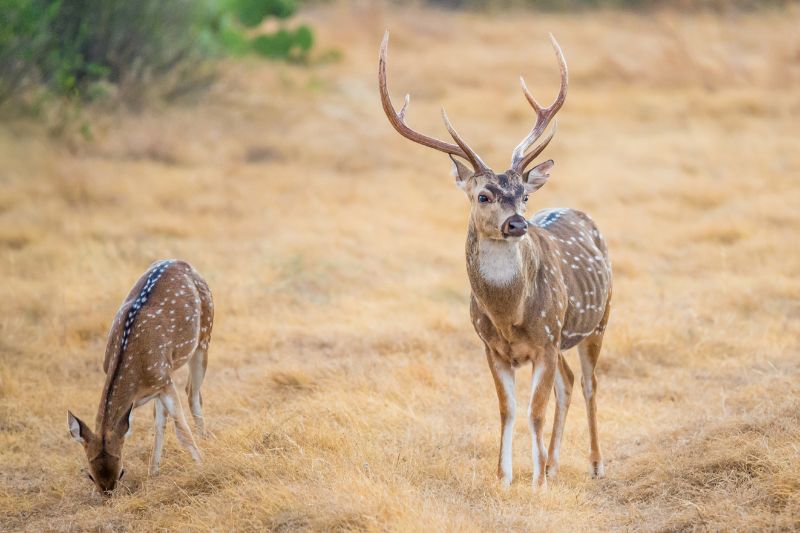
Gaur
The gaur is also known as the Indian bison. Everything about this bovine creature is huge: they have large ears, well-built horns and a massive frame of muscle and brawn. They are incredibly strong; males can weigh up to 1 tonne and measure 3.3 metres long and 2 metres tall. They make formidable opponents to tigers and, despite being vegetarians, are capable of killing tigers in self-defence.
Gaurs live in herds in largely forested areas and low-lying hilly terrain. The largest number of Indian bison can be found in Nagarahole and Bandipur National Parks, but are also widely spotted in Tadoba Andhari Tiger Project and Periyar Tiger Reserve.
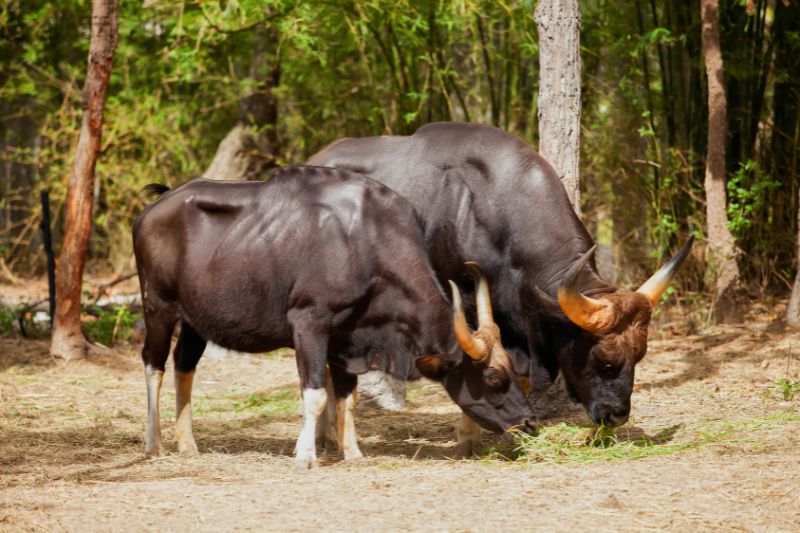
Water Buffalo
The water buffalo is a large bovine animal, which first originated in the Indian subcontinent and southeast Asia. Now, they have spread and can be found in Europe, Australia, North America, South America and some countries in Africa too. They typically have black or grey skin, large hooves and heavy-set bodies. Water buffaloes also have massive horns, measuring up to 2 metres in length.
Over half of the world’s water buffalo live in India, but the vast majority of these are domesticated and used in farming or husbandry. A small number of wild water buffalo still exist in India, living in wet grasslands, swamps, flood plains and river valleys. These wild creatures can mostly be found in Kaziranga, Manas and Dibru-Saikhowa National Parks, as well as Laokhowa Wildlife Sanctuary and Bura Chapori Wildlife Sanctuary.
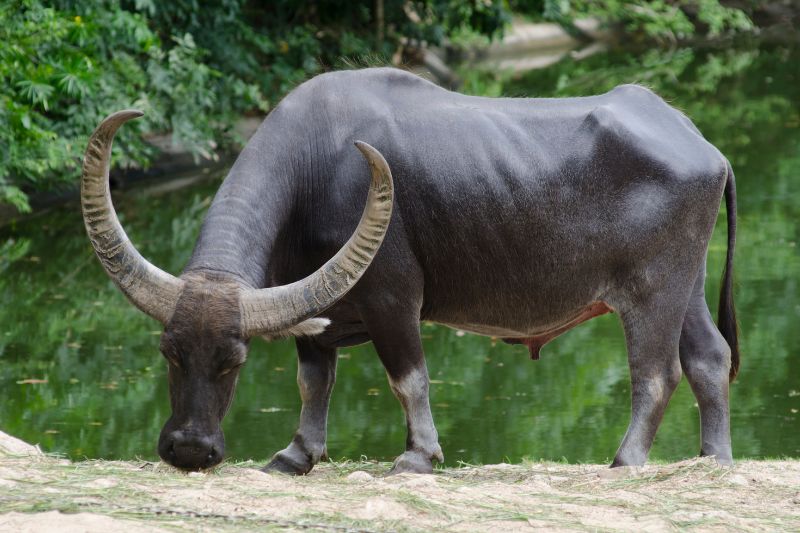
Indian Wild Ass
The Indian wild ass has a sandy coat with a dark mane running from the top of the head to the base of the neck. They are largely grazers, feeding on grass, fruits and leaves. They are one of the fastest Indian animals, and they can easily outrun a jeep at up to 80km an hour.
The last natural habitat of the Indian wild ass is the Little Rann of Kutch (also known as the Indian Wild Ass Sanctuary), an area of roughly 5,000 square kilometres. However, they can also be seen in Surendranagar, Banaskantha, Mehsana and other Kutch districts.
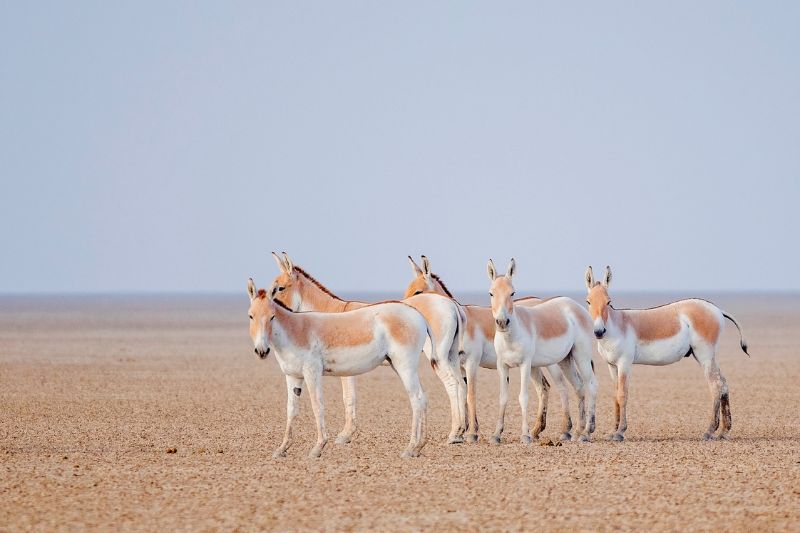
Indian Boar
Indian boars are, you guessed it, native to the Indian subcontinent, and a subspecies of the European wild boar. Their appearance differs thanks to the Indian boar’s mohawk-like mane, which runs from its head to its lower back, as well as its hairy cheeks and smaller frame.
These wild pigs can be seen in grassy areas of national parks in India, and you’ll have particularly good luck seeing them in tiger reserves such as Pench.
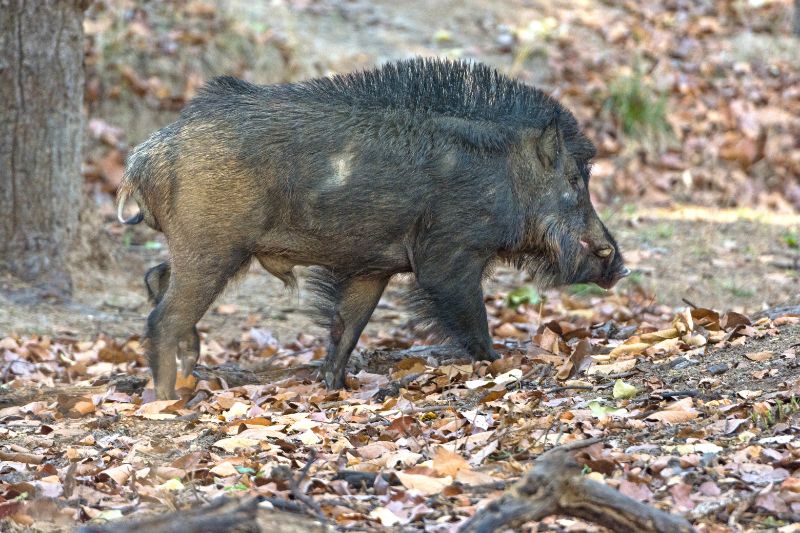
Gray Langur
Gray langurs are found in the Indian subcontinent and, as their name suggests, they have grey fur with black faces and ears. Langurs walk on all fours and spend half their time on the ground, and the other half in trees. They are largely herbivores, with most of their diet made up of fruit, leaves and grasses, however, they can also eat spider webs, termite mounds and insect larvae.
Gray langurs are found in a variety of habitats, including deserts, tropical rainforests and mountainous regions, but they can also be seen in densely populated cities and other human settlements. If you wish to see them on safari, you’re very likely to see them in Jim Corbett, Kanha, Bandhavgarh, Ranthambore, Gir and Nagarhole National Parks.
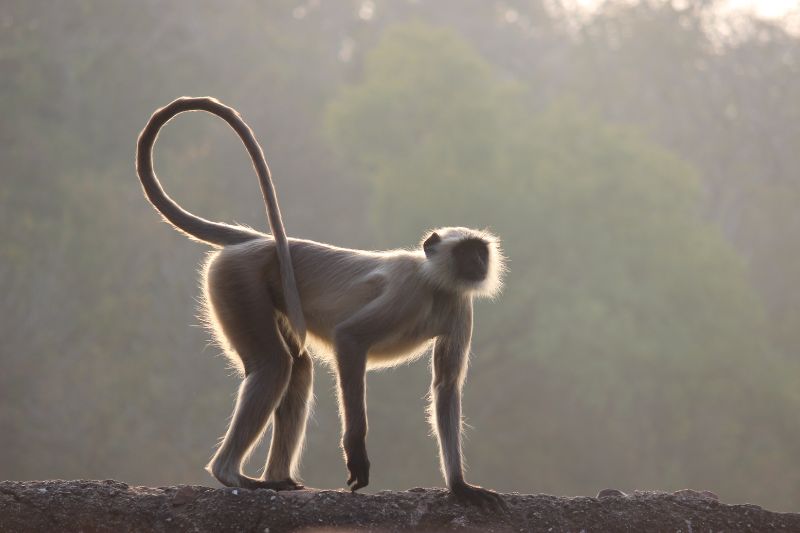
Macaque
There are 23 different types of macaques in the world, and these primates are largely found throughout Asia and India. They are typically brown or black in colour and whether or not they have a tail depends on the specific species. Macaques are very social animals and therefore live in well-established social groups, feeding on a largely vegetarian diet but they have also been observed eating insects.
The macaque you’ll most often see in India is the rhesus macaque, which can be spotted in and around human settlements. In the wild, they can be found in grasslands, forested areas and arid habitats, such as the national parks of Pench, Kaziranga, Ranthambore and Bandhavgarh.
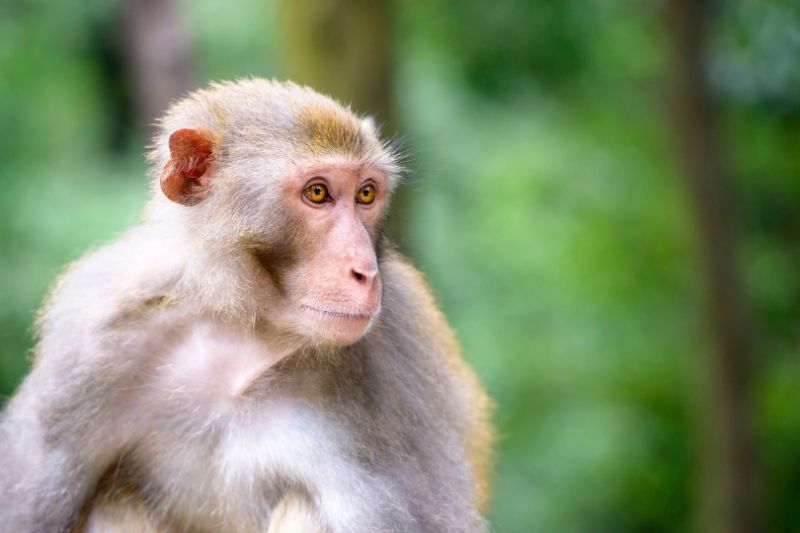
Indian Rhinoceros
Another species that may surprise you to see on this list of Indian animals is the rhinoceros. Most regularly associated with the plains of Africa, rhinos also have a sub-specie, imaginatively named the Indian rhinoceros, native to the Indian subcontinent. They are a large rhinoceros species, second only to the African white rhinoceros and, like other, Asian species, have a single horn. Indian rhinos are characterised by their thick, grey skin with rough, wart-like bumps on their shoulders and legs.
Indian rhinos live in grassy areas in Northern India, with the largest numbers of Indian rhinos in Kaziranga National Park, Jaldapara National Park and Pobitora Wildlife Sanctuary.
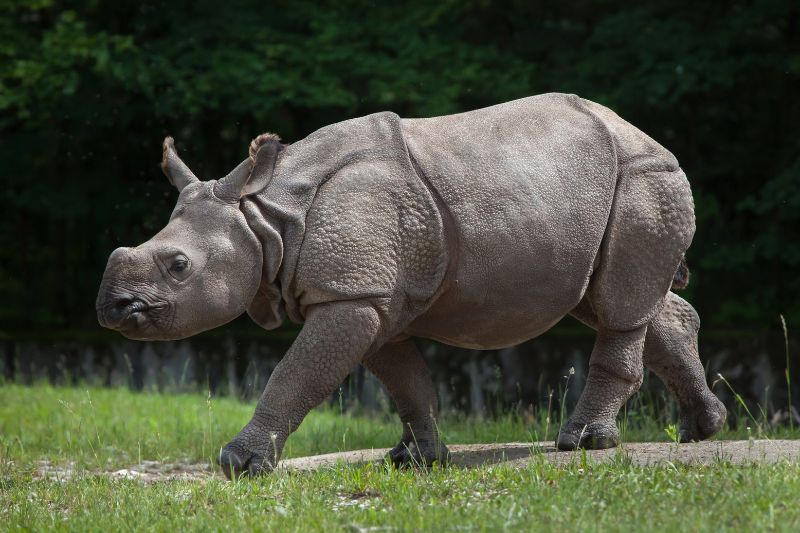
Indian Elephant
The Indian elephant is native to India and all the way over to Borneo. In general, Asian elephants are smaller than their African cousins, but still recognisable with their huge frame, large ears and long trunks. You’ll be extra lucky if you spot a baby on your travels, as they can often be seen tripping over their trunks as they struggle to get used to the 60,000 muscles found in them. When considering tusks, Asian elephant males usually have them, but females usually do not.
For a long time, they were used as working animals for logging or transportation purposes. But now you can see them where they belong in the wild in national parks like Rajaji, Kaziranga and Jim Corbett. You may also see them along the roads as you’re driving between destinations.

Indian Pangolin
The Indian pangolin is native to the Indian subcontinent and is characterised by its large, overlapping scales, which act as armour on its body. In addition to this armour, it can also curl itself into a ball to protect itself against predators like tigers and Asiatic lions. They eat termites, ants and insect larvae, which, due to their lack of teeth, they pick up using their long, sticky tongues.
The Indian pangolins are typically found in grasslands, forests and hilly areas, as well as dry and arid regions. The Indian pangolin is widely spread in India, but sightings are sadly uncommon as they are largely nocturnal, solitary and shy. For the best chance, head to Gir National Park.
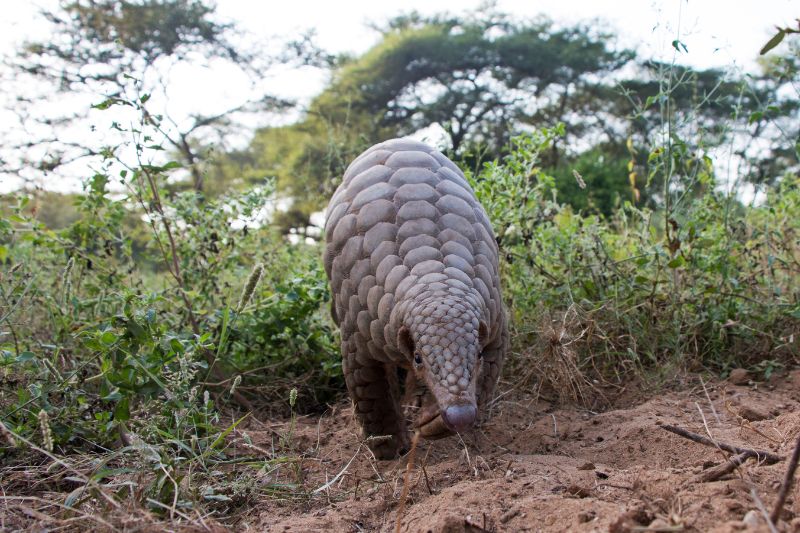
Indian Flying Fox
The Indian flying fox is also known as the greater Indian fruit bat and is a species of flying fox native to the Indian subcontinent. As one of the largest bats in the world, they can weigh up to 1.6kg, with a wingspan of up to 1.5 metres.
They are nocturnal and can live in large groups of up to a thousand bats. Indian flying foxes prefer to roost in tall trees in and around human settlements, where they have access to a plentiful supply of fruit including mangoes, bananas and nectar. That said, they can also be found on safari in national parks like Rajaji, Gir and Ranthambore.

Mugger Crocodile
The mugger, or marsh, crocodile is native to freshwater habitats in the Indian subcontinent. They have dark green or brown skin, thick, bony plates, scaly limbs and webbed feet, as well as a broad snout and a powerful tail. Male muggers can weigh up to 700kg and can measure over 5.5 metres in length.
They can often be found in marshes, lakes and rivers, and they’re widespread in India. The national parks you’re most likely to see them in include Ranthambore, Rajaji and Jim Corbett.
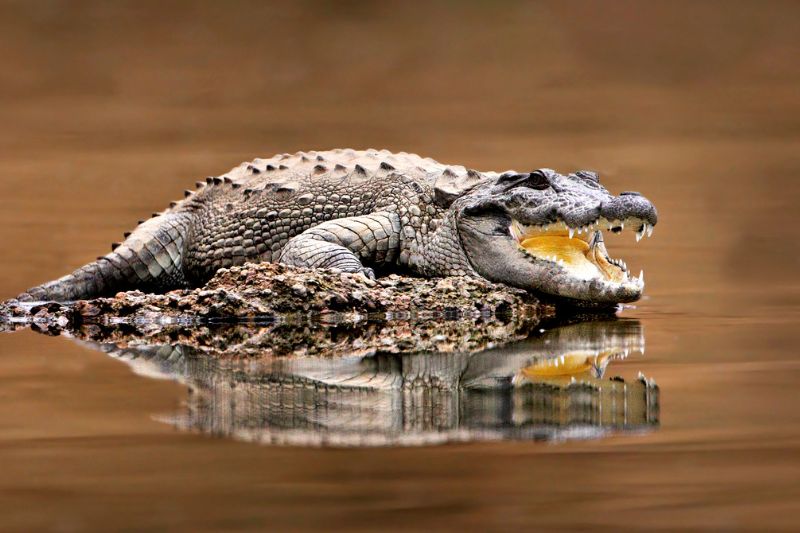
Cobra
There are a number of different species of cobras native to India, including the Spectacled Cobra (Indian Cobra) and the Monocled Cobra (Indian Spitting Cobra). Each one is venomous, and characterised by instantly recognisable as a cobra thanks to the wide hood seen around its neck. They get their name from the colours and pattern seen on the back of these hoods, with the Spectacled Cobra sporting two circles connected by a curved line, while the Monocled Cobra has a single O-shaped yellow mark.
The King Cobra is also found in India, but it isn’t actually in the same family as the Spectacled or Monocled Cobra. Instead, they are in a genus all of their own: the Ophiophagus. These huge snakes are the longest venomous snakes in the world at 18 feet long, with a chevron pattern down the back and a narrower hood than other cobras. The King Cobra gets its name from the fact that it eats other snakes, and they also have enough venom to kill an elephant in a single bite.
Cobras (and other snakes) can be found in most National Parks in India, but if you’re a cobra fan, you’ll stand your best chance of seeing them at Kaziranga National Park, Sundarbans National Park and the Agumbe Rainforest in Karnataka.
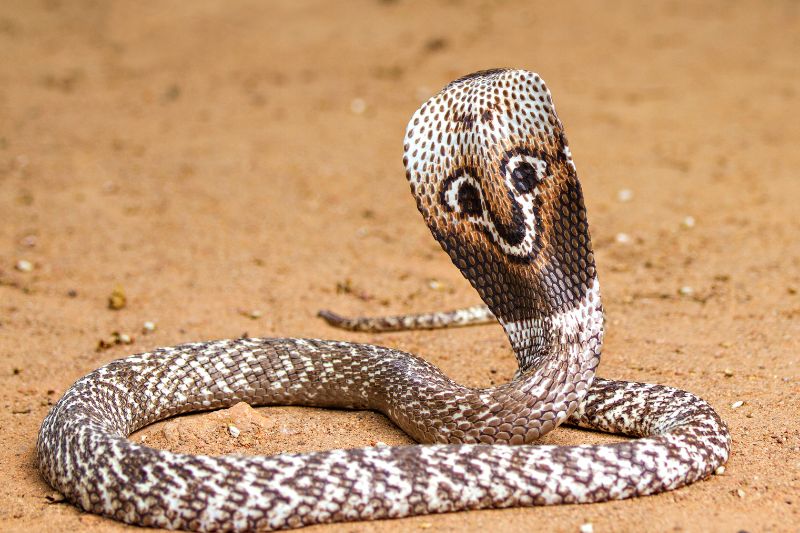
***
Of course, the Indian animals listed here aren’t the only ones you’ll see on a safari in India, but it’s a pretty good indication of the most popular and common species to find. So if you’re ready to get planning, take a look at our safari guides next.

